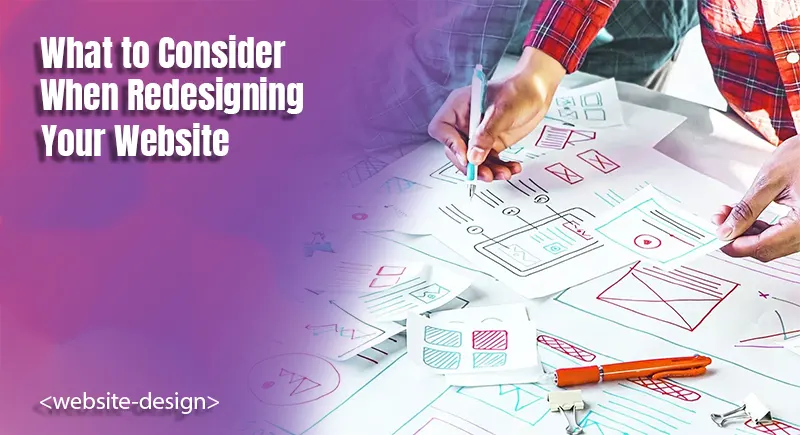A website redesign can give new life to your online presence, boost your sales, and attract new clients. When planning your website design, it’s essential to consider factors that will make your site stand out and appeal to your target audience.
If you’re targeting customers in Australia, using Australian domain hosts can help you ensure your site is optimised for local SEO and faster loading times. It’s important to consider key factors to ensure a successful outcome.
Considerations for Website Redesign?
● Timing and Purpose
First, determine if now is the right time for a redesign. If your website feels outdated, your sales are stagnant, or your current site no longer reflects your business offerings, it’s likely time for a change.
Be clear about the Purpose of your redesign, whether it’s to modernise the design, improve navigation, or align with your current services.
● Refresh vs. Redesign
Decide whether you need a minor website refresh or a complete overhaul. A refresh involves making small updates to content, photos, and colour schemes, while a redesign entails changing the entire look and feel, structure, and content of your site.
If you’re generally satisfied with your website but it needs a little updating, opt for a refresh. If your site isn’t generating sales or has a low conversion rate, a full redesign may be necessary.
● Website Audit and Goals
Find out where your present website is falling short by doing an audit. Analyse your website traffic, visitor behaviour, and conversion rates.
Additionally, define clear goals for your redesign, such as increasing email sign-ups, boosting online sales, or encouraging consultation bookings. This will help guide your redesign process and ensure a more targeted approach.
● Visual Style and Branding
Your website should be consistent with the identity of your brand and relevant to the audience. Research competitor websites for inspiration, but ensure your site stands out and uniquely represents your business.
Consider your colour palette, typography, and imagery to create a cohesive and compelling visual experience.
● Content Preparation
Gather all the necessary content for your redesigned website, including updated copy, fresh images, customer testimonials, and a list of features or integrations you want to incorporate.
Having your content ready in advance will streamline the redesign process and help you stay organised.
● DIY vs. Hiring a Designer
Determine whether you have the time, skills, and resources toredesign your website yourself or if you prefer to hire a professional designer. The DIY approach can be more cost-effective but may require a significant time investment and a willingness to learn.
Hiring a designer might be more costly, but it will obviously result in a more polished, professional site that efficiently achieves your goals.
● Budget Allocation
Allocate an appropriate budget for your website redesign based on the project’s complexity and your chosen approach (DIY or hiring a designer).
Factor in costs for copywriting, photography, and any additional features or integrations you want to include.
● Platform and Tools
Choose the right platform and tools for your redesign. If you’re using WordPress, you can opt for a custom-coded theme or a premade theme that you can customise.
Website builders + Marketing offer drag-and-drop interfaces, making it easier to complete the redesign yourself without dealing with complex code.
Conclusion
Understanding the benefits of website redesign, such as increased traffic and higher conversion rates, can help you justify the investment and allocate the necessary resources to make your redesign a success. Keep in mind that the average cost of a website redesignmight vary significantly depending on the scope of the project.











